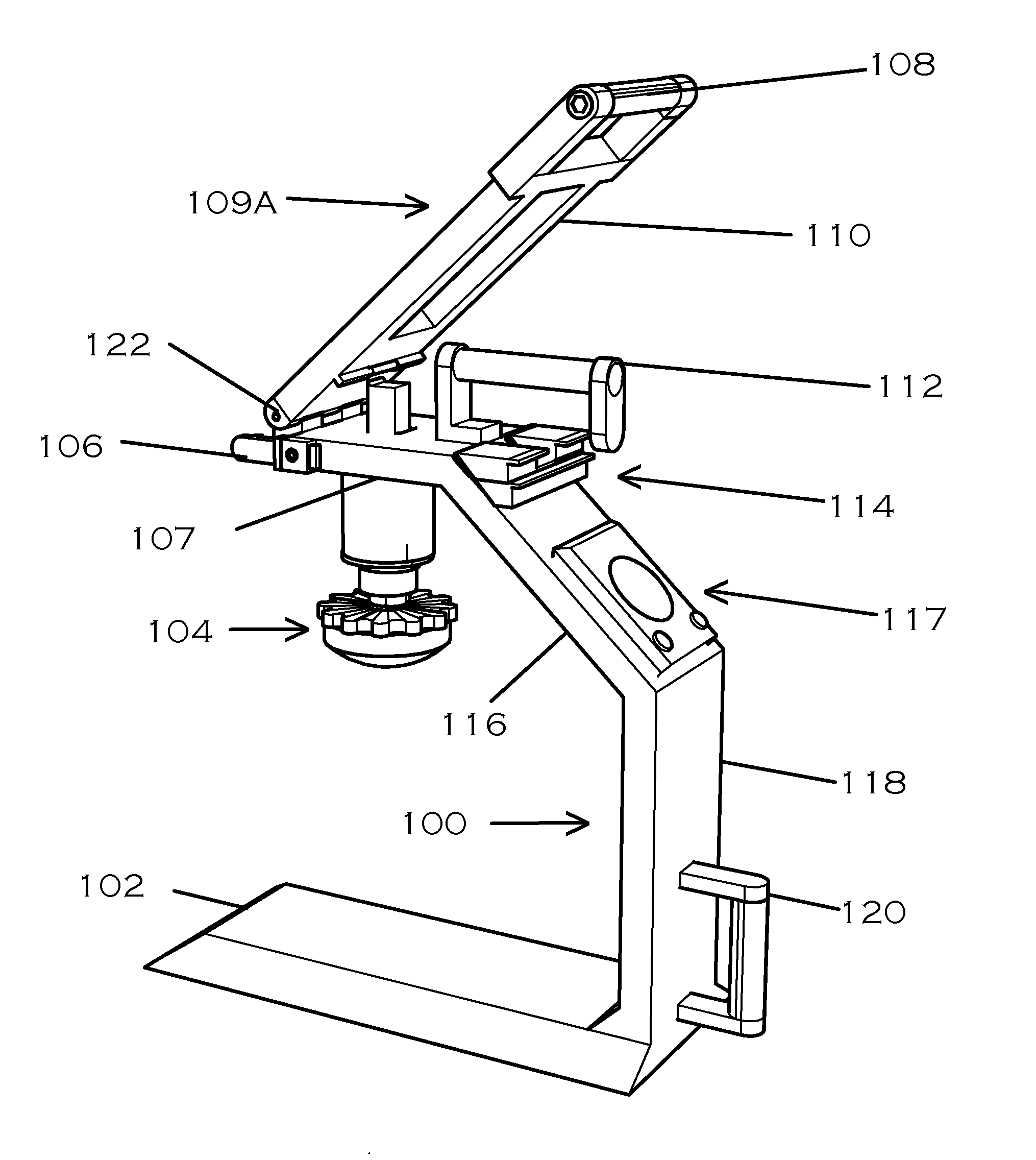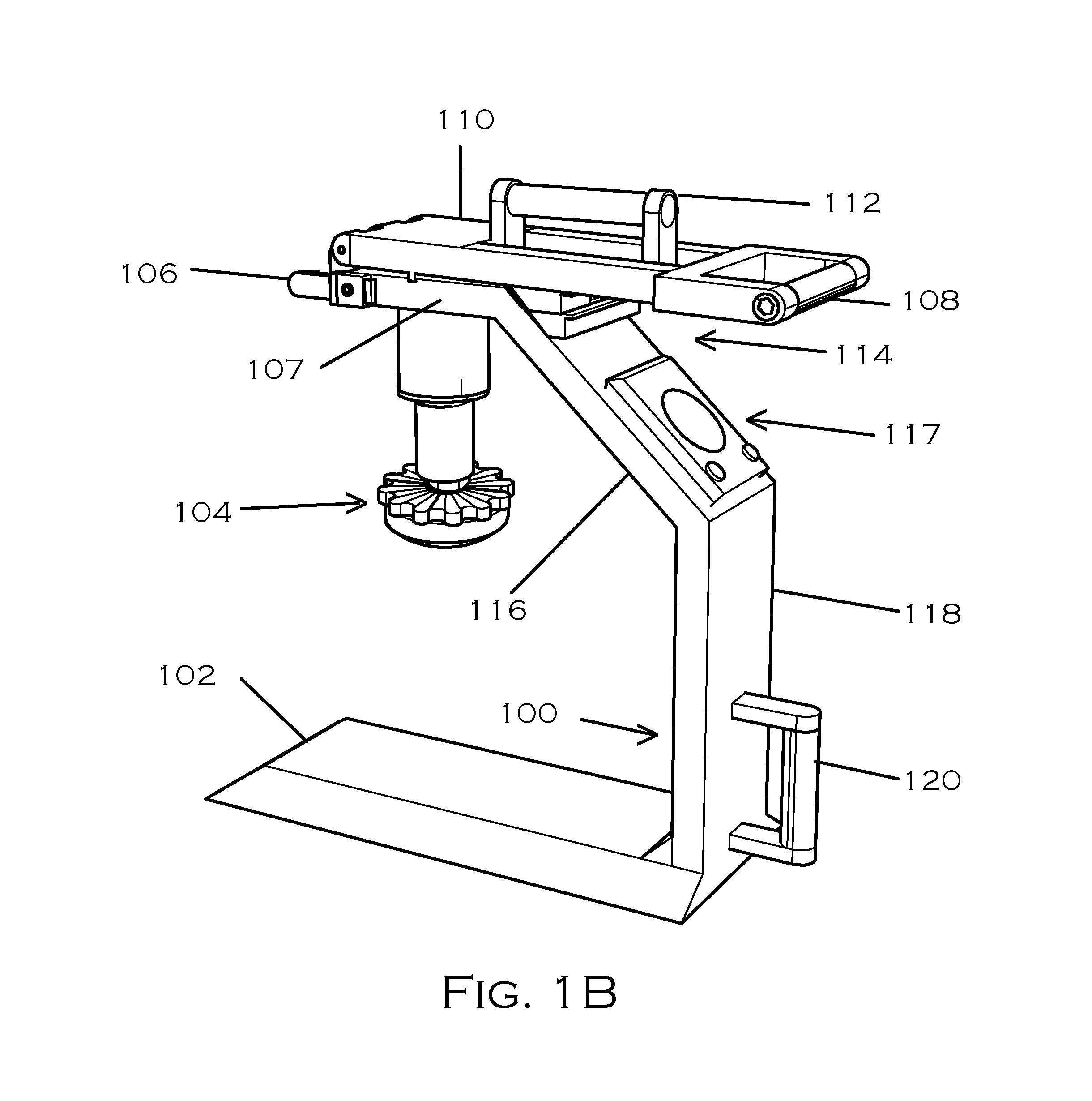Mechanical device to assist in the external compression of the chest during cardio-pulmonary resuscitation
a mechanical device and chest compression technology, applied in the field of mechanical devices to assist in the external compression of the chest during cardio-pulmonary resuscitation, can solve the problems of incomplete chest wall recoil, ineffective methods, and inability to save lives, etc., and achieve the effect of simple, effective and economical devices
- Summary
- Abstract
- Description
- Claims
- Application Information
AI Technical Summary
Benefits of technology
Problems solved by technology
Method used
Image
Examples
Embodiment Construction
[0094]FIG. 1A shows the embodiment in a perspective view. The primary lever 109A is in an operational position. An optional after market electronic metronome 117 is mounted on the sloping part of the upright member with hook and loop or similar material for ease of removal or servicing the unit. The sections 102, 107, 116, and 118, comprising the rigid frame are permanently fused. The two handles 112 and 120 have non-slip sleeves or a non-slip coating on the cylindrical parts for improved grip. A pair of plunger depth limiting blocks 114 is in an inactive position.
[0095]FIG. 1B shows the same embodiment with the lever 109A in a compressed position wherein the dome of the plunger unit 104 has ventrally traversed the default 2 inches. The carrying handle is seen passing thru the opening in the body 110 of the primary lever 109.
[0096]FIG. 1C shows the same embodiment in a storage position. The lever 109A is rotated cranially to assume a ventrally directed vertical position and is held ...
PUM
 Login to View More
Login to View More Abstract
Description
Claims
Application Information
 Login to View More
Login to View More - R&D
- Intellectual Property
- Life Sciences
- Materials
- Tech Scout
- Unparalleled Data Quality
- Higher Quality Content
- 60% Fewer Hallucinations
Browse by: Latest US Patents, China's latest patents, Technical Efficacy Thesaurus, Application Domain, Technology Topic, Popular Technical Reports.
© 2025 PatSnap. All rights reserved.Legal|Privacy policy|Modern Slavery Act Transparency Statement|Sitemap|About US| Contact US: help@patsnap.com



